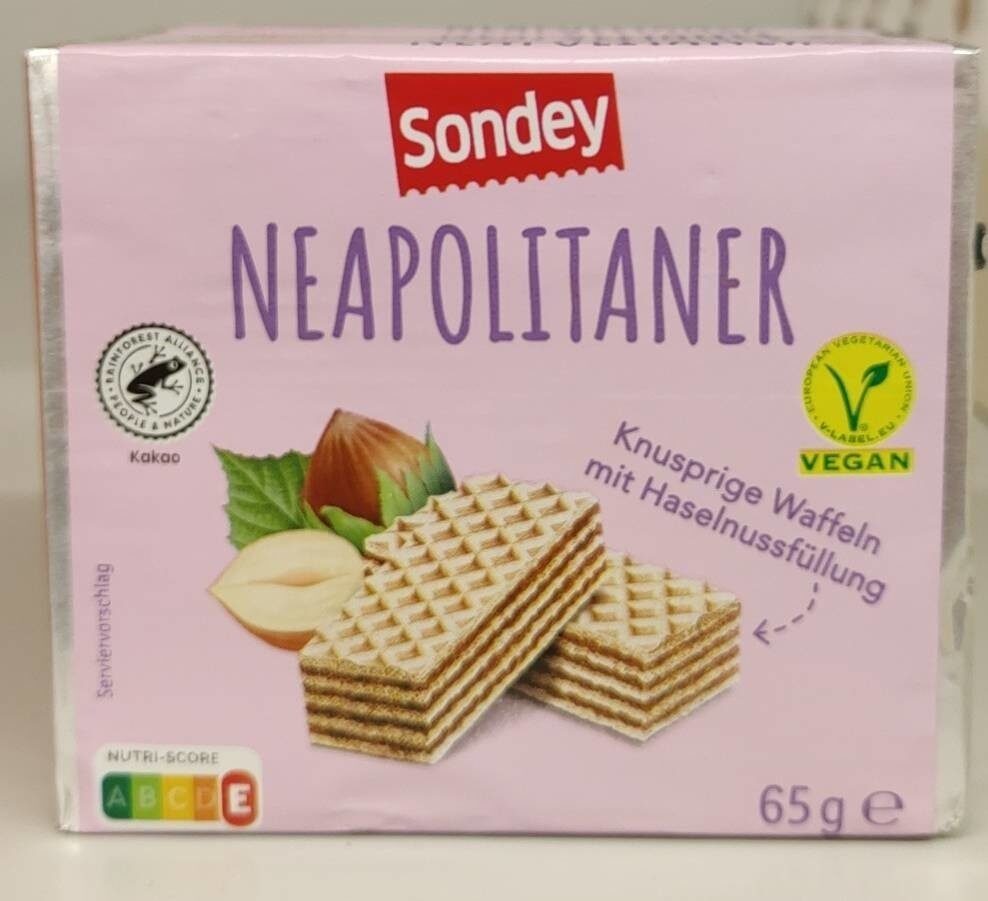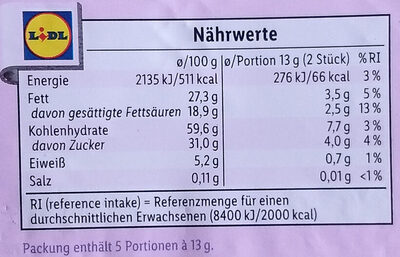Neapolitaner Waffeln - Sondey - 65 g
Codi de barres ambigu: aquest producte té un codi de barres amb número de circulació restringit per a productes d'una empresa. Això significa que diferents productors i botigues poden utilitzar el mateix codi de barres per a diferents productes.
×
Aquesta pàgina del producte no està completa. Podeu ajudar a completar-la editant-la i afegint-hi més dades a partir de les fotos ja disponibles, o fent-ne més amb l'aplicació de androide o iPhone / iPad. Gràcies!
×
Codi de barres: 20856878
Nom comú: Waffeln mit 79% Haselnusscreme gefüllt
Quantitat: 65 g
Empaquetament: da:C/PAP
Marques: Sondey, LIDL, Compliment
Categories: Snacks, Aperitius dolços, Galetes i pastissos, Galetes, en:Wafers, en:Stuffed wafers
Etiquetes, certificacions, premis:
en:Sustainable, Vegetarià, Agricultura Sostenible, Oli de Palma Sostenible, Vegà, Unió Vegetariana Europea, Unió Vegana Vegetariana Europea, Punt verd, Comptador Nutricional, Grau E NutriScore, Aliança Tropical, Taula rodona per l'Oli de Palma Sostenible, Certificat UTZ, Cacau certificat UTZ





Botigues: Lidl
Països on es va vendre: Àustria, Croàcia, França, Alemanya, Romania, Espanya
Matching with your preferences
Report a problem
Fonts de dades
Producte afegit per waistline-app
Última modificació de la pàgina del producte per worldtest.
La pàgina del producte, també editada per 132dava, autorotate-bot, benbenben, ecoscore-impact-estimator, foodrepo, halal-app-chakib, inf, kiliweb, moon-rabbit, openfoodfacts-contributors, packbot, prepperapp, risajanda, roboto-app, teolemon, twoflower, vishaldh, waistline.2b75c597-cccf-4094-addd-9fbb02c21c79, yuka.BK9aYfWXMfV6TPbQ66EQhCGKCt7EM9FBQVIoog, yuka.Um85ZExJOVloc2dodC9GZytTcmExc3BObHJtdGVUT1hDdmdESVE9PQ, yuka.V3JzeU1MWTVvNmhReDh3ejhSencvdjU1NWI2N0FqaTlDOFFMSVE9PQ, yuka.sY2b0xO6T85zoF3NwEKvlhJeeP_1miqZN0zipUbW2-aDdqPYP9pfwNKqNKs, yuka.sY2b0xO6T85zoF3NwEKvlnZsUorgowv_N0fVlEDanv2EPrzyefsr79nLN6s, zinnober.














